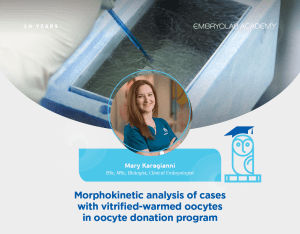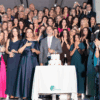Mary Karagianni BSc, MSc, Biologist, Clinical Embryologist
The vitrification of oocytes has been a significant breakthrough in oocyte cryopreservation, leading to substantial changes in practices within IVF laboratories. The process of oocyte vitrification and warming has now become an essential component of the daily routine, highlighting the importance of conducting a comprehensive assessment of its efficiency. Although studies have demonstrated comparable fertilization, cleavage, blastulation, pregnancy, and live birth rates between vitrified-warmed oocytes and fresh oocytes, there remains a lack of thorough investigation into the morphokinetic pattern of embryos originating from vitrified oocytes. Some studies suggest a potential association between vitrification and delayed blastocyst formation, while others have failed to observe any alteration in the morphokinetic pattern when comparing embryos derived from fresh or frozen oocytes.
At the Embryolab Fertility Clinic, we performed a retrospective observational study that included 590 vitrified oocytes derived from 68 oocyte donation cycles. Following ICSI, all oocytes were cultured in the Embryoscope time-lapse incubator until reaching the blastocyst stage.
The findings of our study revealed that two time parameters (tPB2 and tPNa) appeared to occur earlier in vitrified oocytes, without affecting further development. This suggests the necessity for a reevaluation of the time intervals between oocyte pick up, vitrification, warming, and ICSI. Furthermore, vitrified oocytes displayed higher cleavage and top cleavage rates with unaffected blastocyst or pregnancy rates. In conclusion, vitrification of oocytes seems to be safe and reliable.






